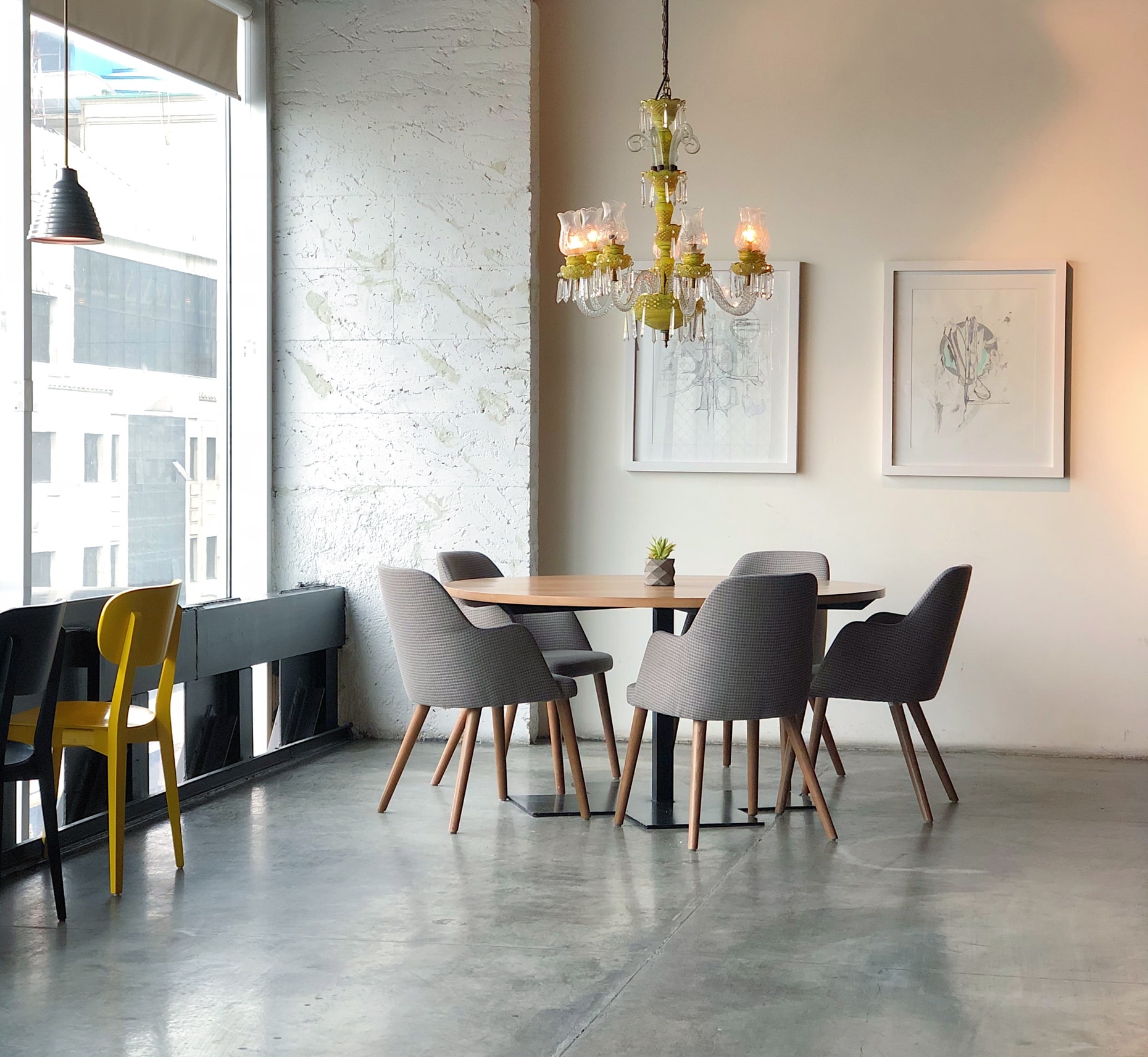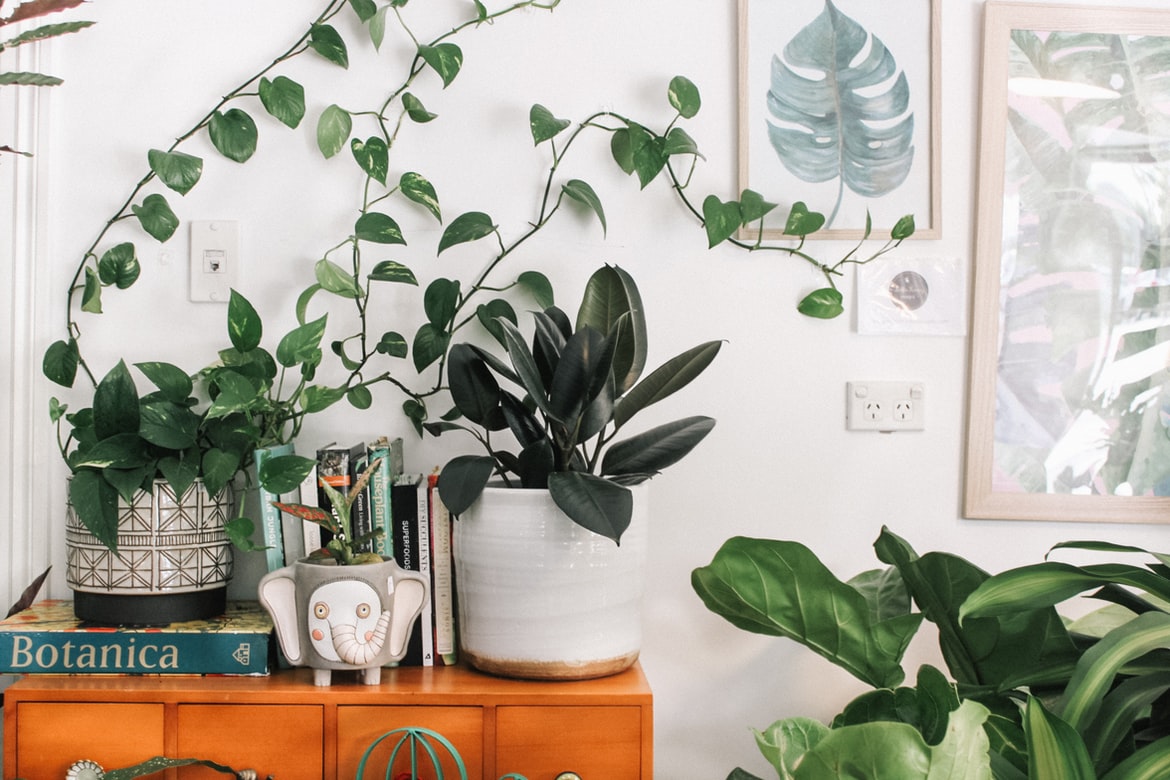We already talked about the connection between crafting and your mental health, but what about the ambiance you are living it? Doesn’t it have its part on your mental health too?
Now psychologists talk a lot about “information noise” – a powerful flow of various details in the surrounding space. So, all sorts of figurines, paintings, vases, and bottles can distract a person’s attention from really important things.
At the beginning of the 2000s, everyone was overwhelmed by the fashion for oriental practices. And along with yoga, ginger, and acupuncture, feng shui came to us.
Particularly impressionable people began to massively move furniture in an attempt to “normalize the flow of Chi energy” in their home. Others simply made fun of them and giggled. But let’s be honest: there is a grain of truth in this – the interior is really able to influence our mood, mental state, and health.
Standards and ergonomics
Now everyone already knows that the light on the student’s desk should fall from the left, and the distance from the eyes to the book should be at least 30 cm. These and other housing standards did not arise from scratch – they were preceded by many years of practice and observation. Therefore, when choosing furniture, it is very important to pay attention to ergonomics, and when building premises – to state standards:
- Cramped rooms should not have doors that open to the left. Especially if you are right-handed;
- Ceiling height must be at least 2.5 m;
- The optimal choice of furniture for children – growing chairs and desks;
- And for beds it is better to buy orthopedic mattresses.
By neglecting these common truths, you are risking your health in the full sense of the word. After all, doors that open in the opposite direction annoy you every day, and insufficient lighting leads to a decrease in visual acuity. Even worse is the situation with uncomfortable beds: they interfere with normal blood circulation during sleep, which can lead to headaches and joint damage.
The influence of interior style on the human psyche
Strict classics and elegant modernity were replaced in the 21st century by modern design trends – minimalism, Scandinavian, loft. And, if you look closely at their features, this happened not by chance: the classics are static.
Respectable solid wood furniture, stucco, carved vignettes, and strict symmetry pacify, endow a person with prudence and slow down his actions;

In contrast, modern design trends are dynamic. They do not have strict symmetry and “superfluous details”, contrasting colors and textures are often combined, geometric prints are also present in small quantities. All this gives a person energy and pushes to action.
Now psychologists talk a lot about “information noise” – a powerful flow of various details in the surrounding space. So, all sorts of figurines, paintings, vases and bottles can distract a person’s attention from really important things. That is why modern interiors are “information-free” – they have little decor, the surfaces are empty, and the lines are straight. Therefore, the people living in them are capable of greater concentration and productivity than fans of the classics or baroque.
Functionality of space
Another factor, the neglect of which can bring you to a nervous breakdown. Be sure to listen to the advice of designers and space organizers:
Cabinets, racks, and other storage systems should be selected based on the number of your things. Otherwise, you risk ending up in a continuous cycle of cleaning and chaos. After all, clothes hung on chairs and countertops completely filled with jars and appliances take up space and “drive away you from home”;
Everything must have its place. Even for keys and glasses, you need to provide a vase or hanger. Otherwise, you will regularly lose them, look for them in the morning, be late and annoyed, which will inevitably lead to neurosis;
Arrangement of furniture and zoning. When choosing a location, it is important to consider the traditional “route” of a person. So, housewives in the kitchen often move from the refrigerator to the sink, then to the table and stove. Therefore, placing them in a different order causes discomfort, fuss, and a lack of desire to cook.
The thoughtless design of power supply systems also becomes a huge source of irritation. So, the lack of an outlet in the kitchen, into which you can connect a blender or mixer, is a source of daily stress. When starting to repair and change the situation, always think about the little things in advance. Better yet, contact a professional designer who will develop a functional and comfortable project for your home.
Colors in the interior and their influence on the human psyche
Almost all of us have our favorite shade. But, before making it the main one in the interior, you should think carefully. After all, it will affect the life of the whole family. It is no coincidence that the main colors in 70% of houses are white, gray, and beige – they are informationally neutral and do not affect the human psyche. The remaining colors should be selected taking into account their influence:
Red is the color of activity and warmth. It has been proven that when contemplating it in a person, blood circulation and the production of gastric juice are accelerated, and excitation processes occur in the nervous system. Therefore, it is good in “small doses” as an activity stimulant. But, if you are prone to gaining excess weight, refuse to use it in the kitchen;
Green is the color of unity with nature and harmony. It will help emotional people find balance, will have a positive impact on personal productivity;

Blue is a cool color that can only be used in interiors with good natural light. After all, it slows down blood circulation and “lowers” the temperature of space – in the abundance of blue, a person always feels cool. It is also undesirable to use this color because of its depressive effect. Therefore, if you really want to add it, choose noble shades with a bias in gray or turquoise, combine with yellow accents;
Purple is the color of relaxation and meditation. In the interior, it is better to use it in light colors, which contribute to the production of oxytocin – the hormone of love, while dark shades are undesirable, as they lead to increased feelings and depression;
Black – pacifying color. Gives a sense of privacy and security. But you need to use it with great care – in small rooms it puts pressure on the psyche. In addition, it is completely impractical – the dust on it has to be wiped daily.
To find some bedroom furniture online or maybe kitchen set in these colors you can search for inspiration on Pinterest or in specialized interior design magazines.
When choosing the main colors of your interior, do not forget to consider two important factors. The first is informational. The abundance of colors leads to fussiness and stupor. Therefore, designers recommend choosing 1-2 primary colors and up to 4 additional ones, in addition, all of them must be combined with each other. The second factor is the location of the apartment and the level of natural light. Do not use cold shades where there is no sun.
As you can see, the wrong choice of style, color, and even furniture can lead you into a trap and cause chronic disorders. Therefore, it is better to entrust the development of a design project to specialists from Avalremont. They will think over every little thing and make your home cozy and friendly for the whole family.
